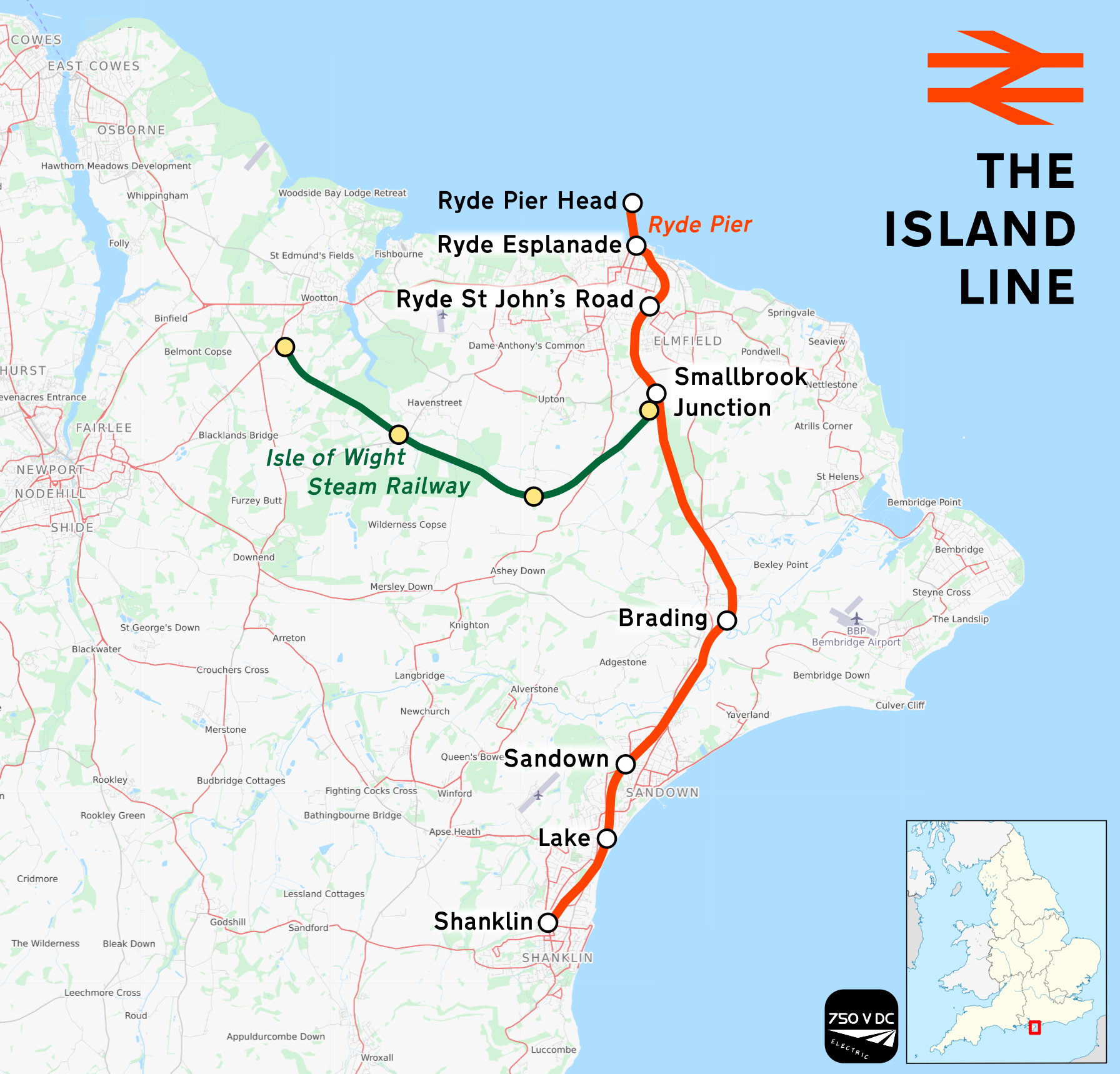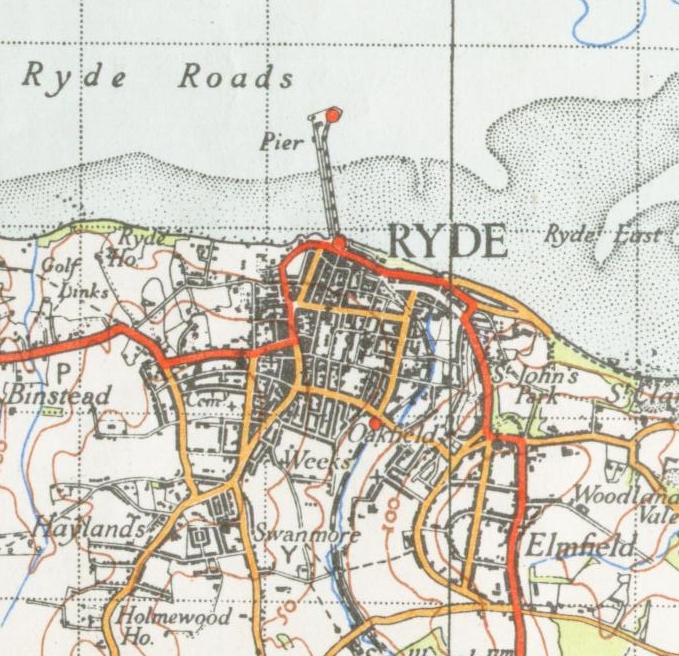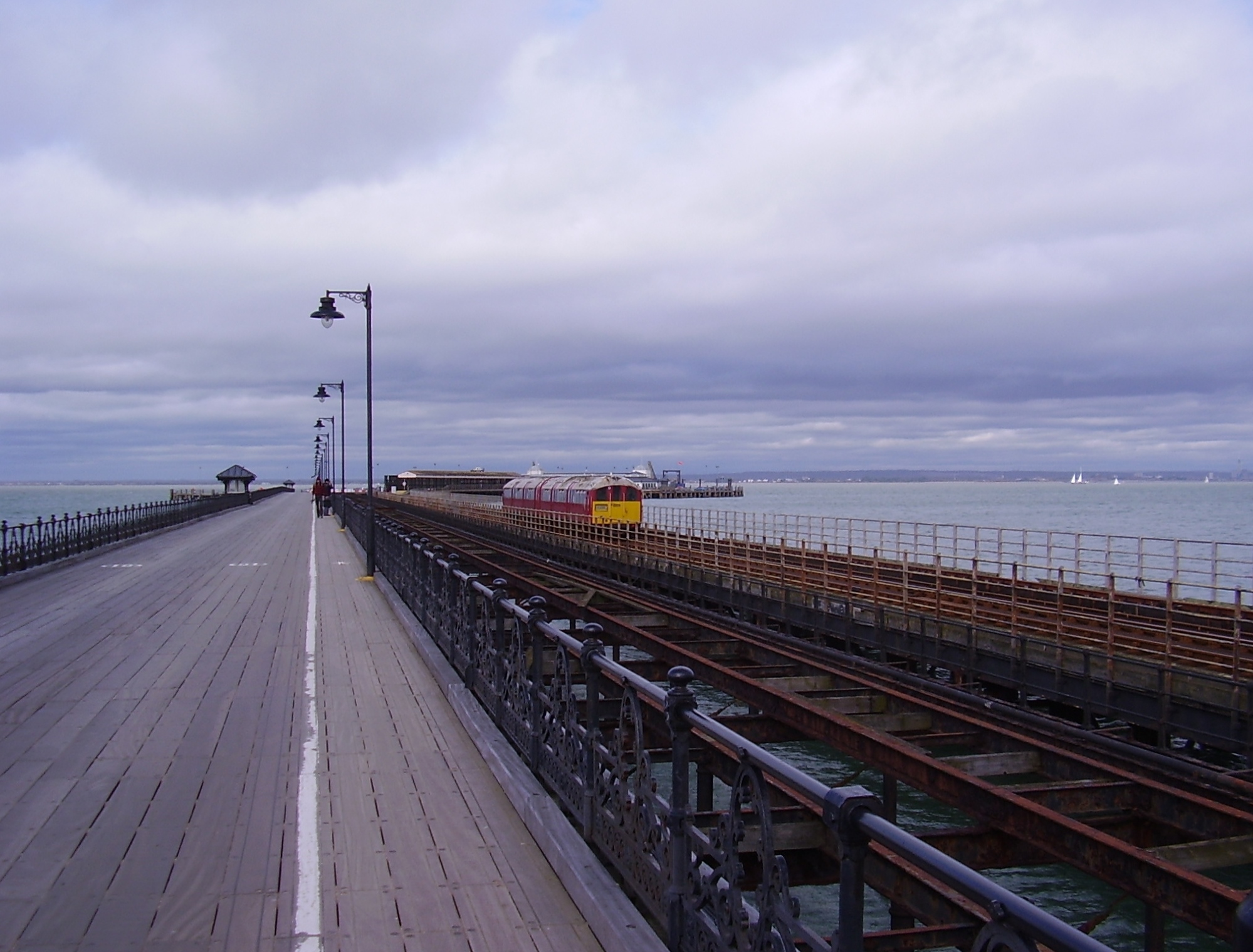|
Ryde
Ryde is an English seaside town and civil parish on the north-east coast of the Isle of Wight. The built-up area had a population of 23,999 according to the 2011 Census and an estimate of 24,847 in 2019. Its growth as a seaside resort came after the villages of Upper Ryde and Lower Ryde were merged in the 19th century, as can still be seen in the town's central and seafront architecture. The resort's expansive sands are revealed at low tide. Their width means the regular ferry service to the mainland requires a long listed pier – the fourth longest in the United Kingdom, and the oldest surviving. History In 1782 numerous bodies of men, women and children from HMS ''Royal George'', which sank suddenly at Spithead, were washed ashore at Ryde. Many were buried on land that is now occupied by the Esplanade. A memorial to them was erected in June 2004. There are a series of Regency and Victorian buildings in the town with important buildings such as All Saints' Church, designed ... [...More Info...] [...Related Items...] OR: [Wikipedia] [Google] [Baidu] |
Island Line, Isle Of Wight
The Island Line is a railway line on the Isle of Wight which runs along the island's east coast and links with . Trains connect at with passenger ferries to , and these ferries in turn connect with the rest of the National Rail network via the Portsmouth Direct Line. The line also connects to the Isle of Wight Steam Railway, a heritage railway, at . For much of its length the line runs alongside the A3055, criss-crossing this road by means of the Ryde Tunnel and bridges at Rowborough, Morton Common, Lake Hill and Littlestairs. Route The line starts at Ryde Pier Head station, which is located at the sea end of Ryde Pier and connects with cross−Solent ferry services to/from operated by Wightlink. The station has an island platform with two platform faces and two tracks, although only the western track (and thus only one platform face) remains in passenger use. From here, the line runs along the pier's eastern side towards the shore before reaching Ryde Esplanade station at ... [...More Info...] [...Related Items...] OR: [Wikipedia] [Google] [Baidu] |
Ryde Esplanade Railway Station
Ryde Esplanade railway station serves the town of Ryde on the Isle of Wight, and forms part of the Ryde Transport Interchange. Located on the sea front, it is the most convenient station for the majority of the town. Ryde Esplanade is also the location of the principal ticket office and all lost property facilities for the Island Line. The larger St John's Road station houses the area office and is next to Ryde Traincare Depot, where all in-house maintenance for the line takes place. History A station has existed on the site since 29 August 1864, when a horse-drawn tram service began operation along the new Ryde Pier. This service, and the line it ran along, pre-dates both the railway line and the current facilities on the site. The tramway was extended to St John's Road in August 1871, but in 1880 this service was replaced by the railway line and current station. The tramway station was originally known as ''Pier Gate''. Trams continued running under various power sourc ... [...More Info...] [...Related Items...] OR: [Wikipedia] [Google] [Baidu] |
Ryde Pier Head Railway Station
Ryde Pier Head railway station is one of three stations in the town of Ryde on the Isle of Wight. Situated at the end of the town's pier, it is adjacent to the terminal for the Wightlink fast catamaran service connecting the island with Portsmouth on the English mainland. Passengers can use this to connect with the rest of the National Rail network at Portsmouth Harbour station, which is adjacent to the Portsmouth terminal. Through rail tickets for travel via Pier Head station are available to and from other stations on the Isle of Wight. These include travel on the catamaran service to or from Portsmouth as appropriate. Trains run down the eastern coast of the Isle of Wight to Shanklin (the Island Line), the last remnant of a network of railways on the island. Because of the restricted loading gauge, particularly through the tunnel under Ryde, services are operated by former London Underground stock. The ticket office at the station is run by Wightlink and not Island Line ... [...More Info...] [...Related Items...] OR: [Wikipedia] [Google] [Baidu] |
Ryde St John's Road Railway Station
Ryde St John's Road is a railway station on the Island Line, and serves the town of Ryde, Isle of Wight. The station is south of Ryde Pier Head—the Island Line's northern terminus. History When the station opened in 1864, it was known as ''Ryde railway station'', as it was the northern terminus of the Isle of Wight Railway at the time. Rather than a railway, a tramway continued northwards to where the current Ryde Pier Head railway station stands; the railway was extended to Ryde Pier in 1880. Stationmasters *Mr. Wells until 1865 *Robert Edward Wright 1865 - 1868 (formerly station master at Shanklin) *Mr. Hopgood until 1874 *Charles Penty 1871 - 1874 (formerly station master at Shanklin) *Mark Gregory 1874 - 1890 (afterwards station master at Sandown) *Albert Shaw from 1890 (formerly station master at Sandown) *Walter Daish ca. 1894 - 1908 (afterwards station master at Brading) *Charles Herbert Colenutt 1908 - 1913 (afterwards station master at Shanklin) *George Henry ... [...More Info...] [...Related Items...] OR: [Wikipedia] [Google] [Baidu] |
Ryde Pier
Ryde Pier is an early 19th century pier serving the town of Ryde, on the Isle of Wight, off the south coast of England. It is the world's oldest seaside pleasure pier. Ryde Pier Head railway station is at the sea end of the pier, and Ryde Esplanade railway station at the land end, both served by Island Line trains. Before the pier Before the pier was built, passengers had the uncomfortable experience of coming ashore on the back of a porter and then, depending on the state of the tide, having to walk as far as half a mile across wet sand before reaching the town. The need for a pier was obvious, especially if the town was to attract the wealthy and fashionable visitors who were beginning to patronise other seaside resorts. The original pier The pier was designed by John Kent of Southampton, and its foundation stone laid on 29 June 1813. The pier opened on 26 July 1814, with, as it still has, a timber-planked promenade. The structure was originally wholly timber and measured ... [...More Info...] [...Related Items...] OR: [Wikipedia] [Google] [Baidu] |
Ryde Transport Interchange
Ryde Transport Interchange or Gateway serves the town of Ryde, Isle of Wight, England. The interchange consists of Ryde Esplanade railway station on the Island Line, the connected bus station and taxi ranks, and the nearby Hoverport. The existing facilities were due to be rebuiltRyde Interchange, Isle of Wight from October 2007. Due to financial difficulties and contract checking, it briefly looked like the project might not proceed. From late November 2008 to October 2009 it appeared that the project was back on track, with work expected to take place, albeit about 18 months later than originally planned, however, in October it was announced that due to increasing costs and dif ... [...More Info...] [...Related Items...] OR: [Wikipedia] [Google] [Baidu] |
Ryde Lifeboat Station
Ryde Inshore Rescue Service is a voluntary run lifeboat station located in the town of Ryde on the Isle of Wight.OS Explorer Map OL29 - Isle of Wight, Folded Map. Publisher:Ordnance Survey; B2 edition (17 Mar 2008). Ryde Inshore Rescue is an independent lifeboat station within the United Kingdom. It is not part of the Royal National Lifeboat Institution and does not receive funding from the RNLI or the government. The station is on call to the Coast Guard 24 hours a day, 365 days a year. The service operates an inshore lifeboat from its station at Appley Lane. History The first lifeboat service in the town started in 1858 and was run on a voluntary basis. On 8 May 1869 the town's rescue volunteers service was supplied with a new lifeboat called ''The Captain Hans Busk'' which was kept and launched from a slipway on Ryde Pier. Volunteer Force originator Hans Busk paid for the boat, and it was named after him. The lifeboat was built by J. Samuel White at Cowes on ... [...More Info...] [...Related Items...] OR: [Wikipedia] [Google] [Baidu] |
Ryde Town Hall
Ryde Town Hall is a municipal structure in Lind Street in Ryde, Isle of Wight, England. The town hall, which was the headquarters of Ryde Borough Council, is a Grade II listed building. History The foundation stone for the building was laid by the physician, Dr John Lind, on 14 May 1830. It was designed by James Sanderson of London in the neoclassical style, built in coursed stone and opened as the local market hall in 1831. The original design was arcaded on the ground floor, so that markets could be held, with an assembly room on the first floor. It involved a symmetrical main block with five bays facing onto Lind Street; the central section of three bays, which was recessed on both floors, featured a tetrastyle portico with Doric order columns supporting an entablature on the ground floor and a similar portico but with Ionic order columns supporting a pediment on the first floor. There were three round headed sash windows at the rear of the first floor portico and iron raili ... [...More Info...] [...Related Items...] OR: [Wikipedia] [Google] [Baidu] |
Wightlink
Wightlink is a ferry company operating routes across The Solent between Hampshire and the Isle of Wight in the south of England. It operates car ferries between Lymington and Yarmouth, and Portsmouth and Fishbourne and a fast passenger-only catamaran between Portsmouth Harbour and Ryde Pier. The company is jointly owned by Basalt Infrastructure Partners based in the United Kingdom and Fiera Infrastructure based in Canada. History Wightlink and its forerunners have provided ferry services to and from the Isle of Wight for more than 160 years. In the early 19th century, ferries ran to the island from Lymington and Portsmouth. Later, steam ferries operated a circular route around Lymington, Yarmouth, Cowes, Ryde and Portsmouth. When the railway companies became involved they concentrated on two direct routes, Lymington to Yarmouth and Portsmouth to Ryde. Ownership of the ferries eventually passed from the British Railways Board to Sealink. In 1984 Sealink was sold to Sea Cont ... [...More Info...] [...Related Items...] OR: [Wikipedia] [Google] [Baidu] |
Hovertravel
Hovertravel is a ferry company operating from Southsea, Portsmouth to Ryde, Isle of Wight, UK. It is the only passenger hovercraft company currently operating in Britain since Hoverspeed stopped using its craft in favour of catamarans and subsequently ceased all ferry operations in 2005. Hovertravel is now the world's oldest hovercraft operator, and this service is believed to be unique in western Europe. Hovertravel has claimed that it is the world's only commercial passenger hovercraft service. The operator's principal service operates between Southsea Common on the English mainland and Ryde Transport Interchange on the Isle of Wight: the crossing time of less than 10 minutes makes it the fastest route across The Solent from land to land. This service commenced operations in 1965, Hovertravel currently operates two 12000TD hovercraft on a single route between Ryde and Southsea. Additionally, Hovertravel has frequently operated other routes throughout the United Kingdom, typ ... [...More Info...] [...Related Items...] OR: [Wikipedia] [Google] [Baidu] |
Southern Vectis
Southern Vectis is a bus operator on the Isle of Wight. The company was founded in 1921 as "Dodson and Campbell" and became the "Vectis Bus Company" in 1923. The company was purchased by the Southern Railway (Great Britain), Southern Railway before being nationalised in 1969. In 1987, the company was re-privatised. In July 2005, it became a subsidiary of Go-Ahead Group. History 1921–1928 In 1921 in Cowes, the company was founded as "Dodson & Campbell". In 1923, the company was renamed the "Vectis Bus Company". "Vectis" is the Roman name for the Isle of Wight. The buses were built by the London bus body builder, Christopher Dodson. 1929–1985 In 1929, the company was purchased by Southern Railway (Great Britain), Southern Railway and was Incorporation (business), incorporated as "The Southern Vectis Omnibus Company Limited". [...More Info...] [...Related Items...] OR: [Wikipedia] [Google] [Baidu] |
Isle Of Wight
The Isle of Wight ( ) is a county in the English Channel, off the coast of Hampshire, from which it is separated by the Solent. It is the largest and second-most populous island of England. Referred to as 'The Island' by residents, the Isle of Wight has resorts that have been popular holiday destinations since Victorian times. It is known for its mild climate, coastal scenery, and verdant landscape of fields, downland and chines. The island is historically part of Hampshire, and is designated a UNESCO Biosphere Reserve. The island has been home to the poets Algernon Charles Swinburne and Alfred, Lord Tennyson. Queen Victoria built her summer residence and final home, Osborne House at East Cowes, on the Isle. It has a maritime and industrial tradition of boat-building, sail-making, the manufacture of flying boats, hovercraft, and Britain's space rockets. The island hosts annual music festivals, including the Isle of Wight Festival, which in 1970 was the largest rock music ... [...More Info...] [...Related Items...] OR: [Wikipedia] [Google] [Baidu] |




.jpg)


